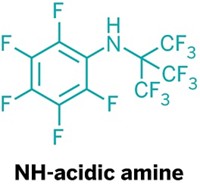Advertisement
Grab your lab coat. Let's get started
Welcome!
Welcome!
Create an account below to get 6 C&EN articles per month, receive newsletters and more - all free.
It seems this is your first time logging in online. Please enter the following information to continue.
As an ACS member you automatically get access to this site. All we need is few more details to create your reading experience.
Not you? Sign in with a different account.
Not you? Sign in with a different account.
ERROR 1
ERROR 1
ERROR 2
ERROR 2
ERROR 2
ERROR 2
ERROR 2
Password and Confirm password must match.
If you have an ACS member number, please enter it here so we can link this account to your membership. (optional)
ERROR 2
ACS values your privacy. By submitting your information, you are gaining access to C&EN and subscribing to our weekly newsletter. We use the information you provide to make your reading experience better, and we will never sell your data to third party members.
Materials
Lowering the Viscosities of Ionic Liquids
November 14, 2005
| A version of this story appeared in
Volume 83, Issue 46
 A barrier to widespread adoption of room-temperature ionic liquids as solvents is that they are much more viscous than common organic solvents. Incorporating silicon is a way to reduce the viscosity, a new study shows. Hideaki Shirota and Edward W. Castner Jr. at Rutgers, the State University of New Jersey, prepared ionic liquids with the trimethylsilylmethyl-substituted imidazolium cation shown and compared their room-temperature viscosities with those of ionic liquids with the analogous neopentyl group (J. Phys. Chem. B. 2005, 109, 21576). The viscosities of the Si-containing liquids are lower than those of the neopentyl analogs by factors of 7.4 and 1.6, depending on the anion: tetrafluoroborate and bis(trifluoromethylsulfonyl)imide, respectively. The researchers also explored the ultrafast intermolecular interactions and dynamics of the ionic liquids and obtained the electronic structures of the individual ions. They find that the alkylsilyl group is larger and more polarized than the alkyl group and that the net electrostatic interactions between cations and anions are weaker for the alkylsilyl cations than for the alkyl cations. As a result, viscosities are reduced.
A barrier to widespread adoption of room-temperature ionic liquids as solvents is that they are much more viscous than common organic solvents. Incorporating silicon is a way to reduce the viscosity, a new study shows. Hideaki Shirota and Edward W. Castner Jr. at Rutgers, the State University of New Jersey, prepared ionic liquids with the trimethylsilylmethyl-substituted imidazolium cation shown and compared their room-temperature viscosities with those of ionic liquids with the analogous neopentyl group (J. Phys. Chem. B. 2005, 109, 21576). The viscosities of the Si-containing liquids are lower than those of the neopentyl analogs by factors of 7.4 and 1.6, depending on the anion: tetrafluoroborate and bis(trifluoromethylsulfonyl)imide, respectively. The researchers also explored the ultrafast intermolecular interactions and dynamics of the ionic liquids and obtained the electronic structures of the individual ions. They find that the alkylsilyl group is larger and more polarized than the alkyl group and that the net electrostatic interactions between cations and anions are weaker for the alkylsilyl cations than for the alkyl cations. As a result, viscosities are reduced.






Join the conversation
Contact the reporter
Submit a Letter to the Editor for publication
Engage with us on Twitter